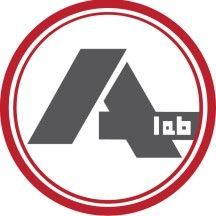MECHANICAL
Mechanical testing provides an exact determination of the mechanical properties of materials. Static and/or dynamic loading in our computer-controlled tensile tester allows for varied test conditions which can be precisely repeated time and time again, for evaluation of both standard specimens and actual assemblies. Tensile and Yield Strength determinations are important mechanical tests, as well as Elongation and Reduction of Area. Hardness evaluations are a required test for many aerospace, automotive, and military applications. Impact testing is useful for predicting toughness of materials at a specific temperature.
TESTING AND ASSOCIATED STANDARDS
Tension & Compression – ASTM A370, ASTM B557, ASTM E8/E8M
ASTM A370 Sect. A 2.5.1.3
Hardness/ Rockwell/Brinell - ASTM E18, ASTM E140
ASTM E10
Charpy Impact/ V-Notch – ASTM E23
Microhardness – ASTM E384
TESTING SERVICES
Tension & Compression
Mechanical testing of material is the most widely used test to determine the materials capability for specific applications. Tensile Strength, Yield Strength, Elongation, and Reduction of Area are the properties that are generally used for specifying the material requirements. Special applications such as lifting devices, actual assemblies, and sectional pieces can be tested by proof load, crush strength, push out tests, etc.
Hardness / Rockwell / Brinell
Hardness of material is dependent on the processing of the part by heat treatment, cold working, aging, etc. Different hardness scales are utilized due to material thickness and hardness. For example, a thin sheet of material is tested using a superficial scale that will not penetrate too deep into the surface. Brinell hardness utilizes a large carbide ball, and the hardness test is over a larger area than Rockwell hardness. This is for material that is not homogenous such as castings.
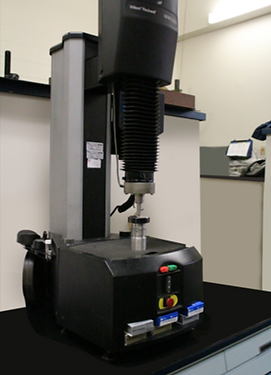
Charpy Impact / V-Notch
Impact testing to ASTM E23 is used to determine a materials ability to absorb energy over a specific area or cross section. This test is highly useful in welding applications to determine the relative toughness of the weld area, as compared to the parent material. Evaluating a series of impact tests over a range of temperatures will result in a determination of the materials "Transition Temperature" in which a material changes from a ductile material to a brittle material.
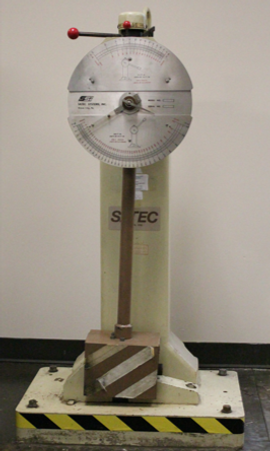
Microhardness
Microhardness is performed on cross sections that are metallographically prepared, and is used for evaluating case hardness, plating hardness, phase hardness, etc.
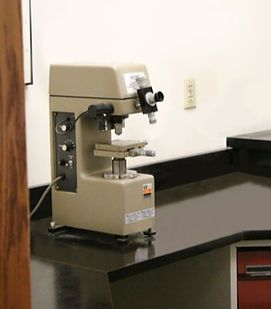
MACHINE SHOP
A full-service, highly equipped machine shop at our facility provides sample preparation in order for the various departments to perform their tests. It is extremely important that all samples are made according to ASTM procedures. Some mechanical testing requires fixtures that are made to properly secure the sample for testing. This is done in-house under the supervision of our technicians. Our machine shop plays an important role in providing exceptional service to our customers.
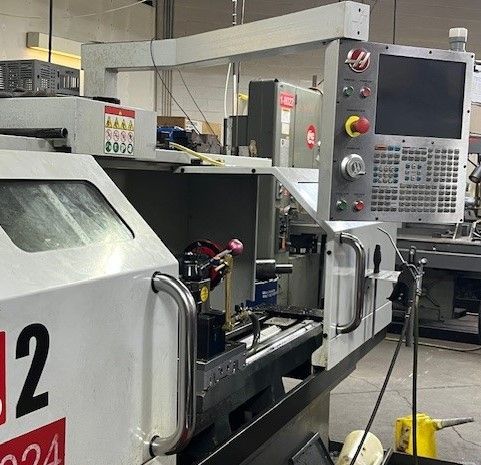
- Welder Qualification: ASME and AWS have set down requirements for qualifying weld procedures and welders or welding operators. Using non-destructive testing such as radiography and penetrant testing, mechanical testing such as tension testing or bend testing, and metallographic evaluation, we can perform Procedure Qualification and Performance Qualification to certify that you are meeting the required specifications.
- Bend Testing – Bend testing may be required to evaluate the ductility of a material or the soundness of a weld. Using an adjustable bending jig and various sized plungers that meet the requirements per AWS, ASME, and ASTM standards, we are able to rapidly adjust to meet the testing needs of any job.
- Fillet Weld Break Test- A fillet weld break test is used to evaluate the internal soundness of a fillet weld either in addition or in lieu of metallurgical evaluation. A force is applied so that the root of the weld is in tension until either the specimen is folded flat or the weld breaks, and then the specimen is evaluated.
- Nodularity: Graphite size and morphology play key roles in the properties of cast irons. Evaluating the nodularity in accordance with ASTM A247 provides standardized results that identify graphite shape, size, and distribution.
- Plating Thickness: The thickness of metal and oxide coatings can be vital to corrosion resistance, electrical conductivity, and more. Using the referee method in accordance with ASTM B487, we can determine the thickness of plating or other metallic coating layers on specimens. Utilizing proper preparation techniques and our high-power microscope, layers below 1 micron thick can be accurately measured.
- Decarburization- Decarburization is the depletion of carbon content on the surface of a part and can cause problems such as lower surface hardness, poorer resistance to wear, and premature cracking or failure. The depth of decarburization is measured in accordance with ASTM E1077 by utilizing either metallurgical evaluation or microhardness traverse testing.
- Macrostructure- Macroetch testing is a test that reveals a great deal of information about the structure of steel products. It is used to evaluate how homogeneous by showing structural variations, such as dendrites or grain size; chemical variations, such as segregation or banding; or discontinuities, such as laps, cracks, or porosity. Preparation, etching, and evaluation are performed in accordance with ASTM E381.
- Salt Spray: Corrosion can cause problems in parts ranging from purely cosmetic to compromising the structural integrity. Salt spray testing in accordance with ASTM B117 is an accelerated corrosion test using a neutral salt fog. Our salt spray chamber can accommodate several dozen standardized test panels while still leaving room for other additional specimens, and we are able to easily rearrange the racks and supports to best meet your needs.
- IG Corrosion Susceptibility- Chromium-rich carbides can precipitate at grain boundaries in austenitic stainless steels such as 304 and 316. Using Practice A or Practice E per ASTM A262, stainless steel specimens are examined to detect the susceptibility of intergranular attack due to the presence of grain boundary carbides.
Accreditation
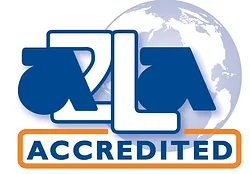

Copyright © A-Lab Corp. | All Rights Reserved
